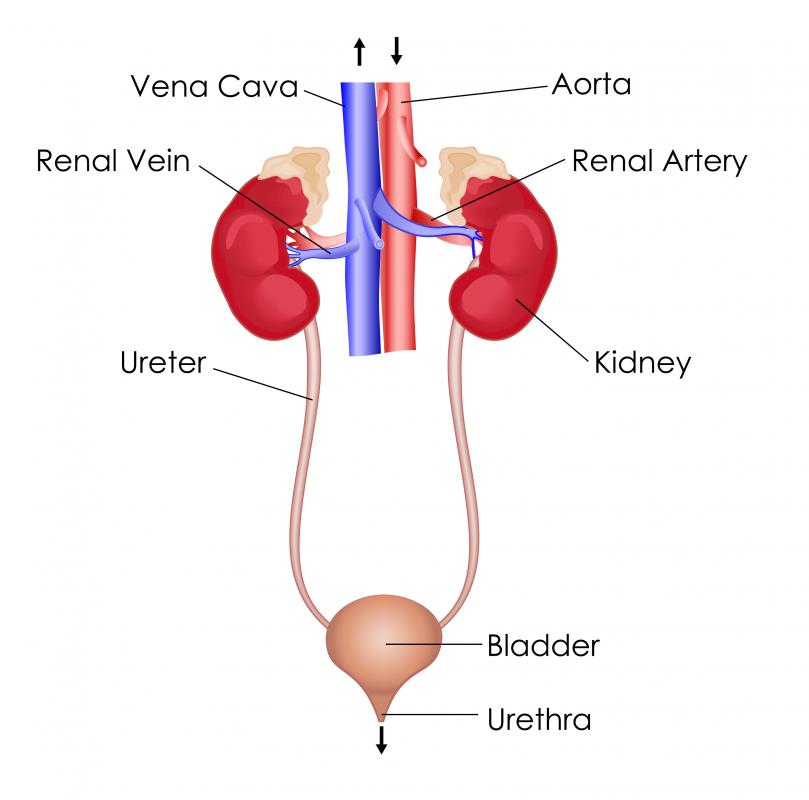At WiseGEEK, we're committed to delivering accurate, trustworthy information. Our expert-authored content is rigorously fact-checked and sourced from credible authorities. Discover how we uphold the highest standards in providing you with reliable knowledge.
What Is the Anatomy of the Urinary System?
The anatomy of the urinary system includes all of those parts that help the body make and expel urine. Made up of the kidneys and the bladder — along with the ureters, tubes that connect each kidney to the bladder, and the urethra, which leads to the outside of the body — the urinary system helps regulate chemicals in the body and removes waste products from the blood. The urinary system may be considered part of the larger excretory system, which also includes the lungs and skin.
The kidneys and the bladder are the two main parts of the anatomy of the urinary system. The position of these organs within the body allows them to perform their functions. The two kidneys sit on either side of the body, near the middle of the back, and the waste products they pull from the blood are combined with water, moved through the ureters, and emptied into the bladder. Once the bladder starts to get full, nerve endings signal the brain that the person needs to urinate. Sphincter muscles between the bladder and the urethra can then be relaxed, allowing for the urine to be released.

Each part of the anatomy of the urinary system plays its part in eliminating waste products from the body, but the kidneys are complex organs that also perform other functions. Their ability to remove substances — including urea, uric acid, and other wastes — from the blood allows them to help regulate the body. If a person eats a lot of salty food, for example, the concentration of salt (Na) in the bloodstream will increase. This excess salt is usually filtered out by the kidneys, then expelled from the body in the urine. Filtering out the salt helps to keep the body in balance. The kidneys also help regulate blood pressure and produce hormones, including erythropoietin, which is connected to the production of red blood cells.

Many small molecules, like amino acids and glucose, are reabsorbed by the kidneys after they are filtered from the blood, and return for use in the body. Anything that is not reabsorbed by the kidneys — either because it is a waste product or because there is more of it than the body needs — is flushed out with the urine. The most common waste product in the urine is urea, which is an organic compound produced when the body breaks down foods that contain protein. Urea plays a key role in removing nitrogen from the body.

Although the kidneys may be the most complex part of the anatomy of the urinary system, they could not function without the ureters, bladder, and urethra. The bladder is a muscular organ that stores the urine produced by the kidneys so that it can be eliminated from the body regularly. The ureters move urine from the kidneys to the bladder, and the urethra is basically a tube that allows the bladder to be voided to the outside of the body. In addition to these major parts of the urinary system, there are many blood vessels, nerves, ligaments, and muscles that contribute to the healthy functioning of this part of the excretory system.
AS FEATURED ON:
AS FEATURED ON:














Discuss this Article
Post your comments